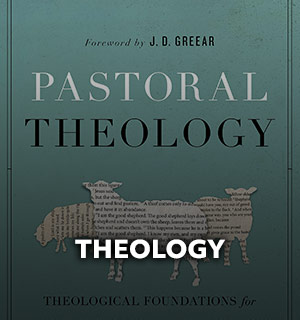
When Jesus Became an Embryo: Celebrating the Microscopic Depths of God’s Love
By Aaron Wilson
If you really want to be awed by the incarnation of Christ this Christmas, take a moment to examine the period that ends the next line.
This dot right here → .
As you stare at the few pixels that make up the period above, imagine what it would be like for the fullness of almighty God to suddenly become funneled into that tiny blip of a space.
Nine months before Jesus was ever away in a manger, that’s exactly what happened. It’s a part of the Christmas story Christians often skip over in their readiness to celebrate the nativity.
But it’s the real origin of the Incarnation. The day Jesus became an embryo.
When God Took on Cells
When Christians talk about the Incarnation, they’re referring to the act when God the Son took on a human nature. This didn’t first happen on the day we celebrate Christ’s birth.
God didn’t enter into humanity on Christmas morning as a newborn baby. He entered it nine months earlier inside of Mary’s womb.
God didn’t enter into humanity on Christmas morning as a newborn baby. He entered it nine months earlier inside of Mary’s womb. — @AaronBWilson26 Click To TweetWe learn this in Matthew 1:18, which records that before Mary and Joseph came together, she was “found to be with child through the Holy Spirit” (ESV). Two verses later, God also tells Joseph “that which is conceived in her is from the Holy Spirit.”
This passage, along with many others, offers biblical proof that human life begins at conception in that God ascribes personhood to “that which is conceived.” It also shows that while Joseph wasn’t Jesus’ biological father, the Messiah was indeed conceived as part of the incarnation.
Even without knowing all the details of how God did this—it was, after all, a miracle—we can still celebrate the biblical claim that Jesus grew in a womb just like every other human does.
A Microscopic Savior
At conception, an egg and sperm join to form a human embryo, a pronuclear two-celled person created in the image of God. The Lord designs these cells to divide so that in just a few days, four to twelve cells are present.
Five to six days after conception, the embryo is deemed a blastocyst and has amazingly grown into more cells than can be counted. At this stage, the embryo is still imperceptible to the naked eye, able only to be viewed through a high-powered microscope.
Stop and ponder the implications here.
Nine months before Christmas morning, Jesus went from ruling the world in heaven with His Father and the Holy Spirit, to enter into the smallest, most dependent, most microscopic form of human life.
The God who authored a universe that can’t be measured, humbled Himself into a form that can’t be seen.
It’s a staggering thought.
The God who authored a universe that can't be measured, humbled Himself into a form that can’t be seen. — @AaronBWilson26 Click To TweetEven more mind-boggling is the fact that there was a time when the incarnate spirit of Jesus was in an embryonic human form that hadn’t yet grown eyes, fingers, a brain, or even a spinal cord.
Even Christ’s holy blood cells that would later be shed to save humanity, first had to be formed by a yolk sac inside of Mary’s womb.
In the months leading up to Christmas, Jesus—who formed the world and invented human reproduction—was Himself being formed inside one of His creations through the very blueprints He had established for human development.
He Holds All Things Together
As you’re pondering these truths, consider Colossians 1:16-17 as it speaks of Jesus:
“For everything was created by him, in heaven and on earth, the visible and the invisible, whether thrones or dominions or rulers or authorities—all things have been created through him and for him. He is before all things, and by him all things hold together.”
Doesn’t this truth make the incarnation all the more amazing? For a moment in time, the entire universe was being held together in the form of a microscopic, two-celled human embryo named Jesus.
Before a single Messianic prophecy was uttered, God could have ordained that Jesus would miraculously appear incarnate as a fully formed 33-year-old man—ready to die for sins. But God sovereignly chose to have Jesus go through stages of human development that included puberty, teething, birth, and even gestational growth.
It was as if God wanted to make sure His people knew that the Messiah was both fully God and fully human—Immanuel who went to great lengths to prove He really is God with us.
Going Back Further Than the Manger
This Christmas, let thanksgiving flow from your heart as you consider that on Jesus’ way to the cross, He humbled Himself in such an unbelievable fashion to become a human embryo.
And the next time you see a manger scene, backtrack even further in the Christmas story to consider the depth of the love of Christ found in the preborn origins of the Incarnation.

Aaron Wilson
Aaron is the internal communications manager at Lifeway and an associate editor of Lifeway Research. He and his family are members of Redeemer Church in Hendersonville, Tennessee, where they serve together in the children’s ministry.








